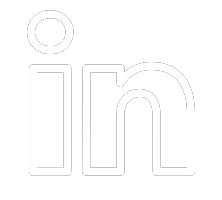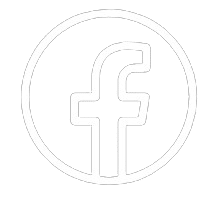Up to 90% Financing! Available for any project. Some restrictions apply. See Details

Design Starting Tips
May 26, 2023
There is nothing more exciting than embarking on a new design project. Whether you
are redesigning your website, creating a logo for your brand, or developing new
products, new endeavors are so beneficial. To ensure the success of your project and
align your vision with the expertise of the designer, it is important to establish clear
communication in the new relationship. Discussing important aspects upfront allows you
to set the stage for productive collaboration and carrying out remarkable results.
Before Designing
● Define Your Goals and Objectives – Articulate your goals and objectives for the project clearly. Know what it is that you want to achieve before collaboration. There are multiple different goals you can achieve from sharing your aspirations such as increasing brand recognition, improving user experience, or conveying a specific message. Sharing your aspirations allows your designer the ability to tailor their approach accordingly and help you reach your desired outcome.
● Describe Your Target Audience – Prepare to provide detailed insights about your target audience. Understand who you want to attract and what their preferences, demographics, and behavior patterns want to see. Having an understanding of your audience is fundamental in crafting designs that resonate with them. Sharing this information with your designer can create visuals that effectively communicate with your intended audience.
● Share Your Brand Guidelines – If you are already confident in the brand you have established, be sure to provide your designer with brand guidelines. These guidelines typically include information about your brand’s color palette, typography, logo usage, and overall visual style. It is crucial to remain consistent across different platforms for maintaining brand identity and recognition.
● Offer Examples and Inspiration – Compile a collection of design examples and inspiration that align with your vision. These could be other websites, logos, or product designs that you find appealing. Using these references with your designer will give them a more profound understanding of your aesthetic preferences and can serve as a starting point for discussion.
● Discuss Project Scope and Timeline – Clearly define the scope of your project, including deliverables and deadlines. Openly discuss the key milestones and expectations for each phase of the design process. Establishing a timeline and scope, you and your designer can manage expectations and avoid potential miscommunications or delays.
● Communicate Your Budget – Be up front and transparent about your budget constraints. Understanding your financial limitations will allow your designer to propose realistic solutions and prioritize their efforts accordingly. A clear budget ensures that the designer provides appropriate options while keeping your financial boundaries into consideration.
● Encourage Open and Engaging Communication – Establish a communication plan with your designer that works for both of you. Determine the preferred mode of communication such as email, video calls, or project management tools. Encourage open dialogue and regular check-ins to provide feedback, track progress, and address and concerns. Collaborative approaches foster a stronger working relationship and meet your expectations.
The key to a successful project is effective communication with your designer. Discussing the key elements of starting a new project with your designer sets the foundation for a productive collaboration. Sharing examples and establishing a clear scope, timeline, and communication plan will help your designer capture your brand essence. The more transparent and thorough you are in your initial discussions, the greater the likelihood of achieving outstanding design outcomes.
Check out our website for more information to help gain an even better understanding of what we do. Our website also includes endless amounts of successful projects and where our clients come from. On our website you will also have access to information on the members of our team. We are also active on social media accounts like Facebook, LinkedIn, and Twitter providing more detail on what our goals are for the clients we work with. Let us help turn prospects into customers through awareness, consideration, conversion, and loyalty.
Good Web Design Signs
May 18, 2023
Now that we are familiar with the core elements and benefits of web design, it is important to use these factors to create a good web design. A good web design not only captivates users but also ensures a seamless experience, enhancement to overall engagement, and drives conversions. Creating a powerful online presence and leaving a lasting impression on your audience and the keys to a successful web design.
The Signs
● Intuitive Navigation – Users should be able to easily find what they are looking for without confusion. Clear and well-structured navigation menus and search functions are vital components that play a contribution. A good web design is effortlessly accessible to all the desirable information or products that a user wants.
● Responsive Design – Responsive design is now a necessity rather than a luxury in the digital world. A good web design can adapt to different screen sizes and resolutions creating optimal experiences for users. Mobile friendly designs improve user quality and search engine rankings.
● Consistency and Visual Appeal – First impressions are everything and the visuals play a significant role. Well-chosen color schemes, layouts, and images create the brand image and consistency of your web design. Ensuring visual appeal captures the attention of a good web design and builds trust in your audience.
● Fast Loading Speed – A good website is fast-paced and loads quickly. Slow-loading websites lead to high bounce rates and leave users unhappy with their experience. By focusing on performance optimization, you enhance the user experience as speed is a crucial factor for search algorithms.
● Calls-to-Action – User-friendly forms and calls-to-action are essential for converting users into leads or customers. A good web design incorporates well-designed forms with clear labels, minimal fields, and logical layouts for the submission process. Guiding users towards the desired actions improves conversion rates and the website’s overall effectiveness.
● Accessible Structure – A good web design considers accessibility guidelines ensuring that all users, including those with disabilities, can navigate the website with ease. A good website is also search engine optimization friendly, employing clean code, relevant keywords, and tags to improve visibility on search results pages.
● Analytics – A good web design integrates analytical tools and user behavior tracking.
Understanding how users interact with your website can help identify areas for improvement. Analytics provide insights into visitor demographics, popular content, conversion funnels, and more. Achieving your business goals and optimizing your website’s performance is done through analytical tracking.
A good web design combines aesthetics, functionality, and user-centered principles. Creating an engaging experience for users while effectively conveying the brand’s message is the proper way to use web design to your brands advantage.
Check out our website for more information to help gain an even better understanding of what we do. Our website also includes endless amounts of successful projects and where our clients come from. On our website you will also have access to information on the members of our team. We are also active on social media accounts like Facebook, LinkedIn, and Twitter providing more detail on what our goals are for the clients we work with. Let us help turn prospects into customers through awareness, consideration, conversion, and loyalty.
Web Design
May 11, 2023
In the technologically interconnected world, the term “web design” is often used. Web design goes beyond the arrangement of colors and images displayed on the web page. The world of web design is captivating due to its multifaceted nature and the significance it holds. There are specifically qualities and skills that are needed to create a visually appealing and functional website.
The Core of Web Design
Creativity plays a huge role in web design; however technical discipline also adds to the functionality of web design. The planning, conceptualization, and execution are all key
elements to creating an engaging online experience for visitors. Web design encompasses various aspects that work together to deliver a seamless user experience ensuring both aesthetic appeal and usability.
Elements of Web Design
● Layout – The arrangement and organization of the elements of a webpage includes headers, content blocks, and sidebars. An effective layout guides users to these elements and helps them to effortlessly navigate towards them.
● Typography – The choice of fonts, sizes, spacing, and hierarchy of text elements are what define the typography. The readability is greatly impacted and conveys the tone and personality of the website and enhances the overall visual appeal.
● Colors – The color palette of a website sets the mood, evokes user emotions, and establishes the brand identity. Creating a cohesive visual language throughout the website stresses the importance of carefully choosing colors.
● Graphics – Visual elements such as illustrations, icons, and images all contribute a role in the aesthetics and conveying of information efficiently. High quality images and well-crafted graphics are useful when engaging users.
● Navigation – Finding information easily reduces user frustration and improves the overall experience. Clear navigation menus and search functionalities require seamless exploration.
● Responsiveness – Websites must adapt to different screen sizes and resolutions to ensure a consistent experience across all devices.
Benefits of Web Design
● Enhanced User Experience
● Improved Brand Image
● Increased Conversion Rates
● Competitive Advantage
● Scalability
● Flexibility
● Analytics
● Data Tracking
Web design is highly beneficial to the brand creator and the users of the site. Investing in professional web design is a strategic move as it yields long term advantages and helps businesses thrive in the digital world.
Check out our website for more information to help gain an even better understanding of what we do. Our website also includes endless amounts of successful projects and where our clients come from. On our website you will also have access to information on the members of our team. We are also active on social media accounts like Facebook, LinkedIn, and Twitter providing more detail on what our goals are for the clients we work with. Let us help turn prospects into customers through awareness, consideration, conversion, and loyalty.
Compressing Files
May 5, 2023
The technique of compressing files has been around for quite some time and has remained relevant until today. Compressing files is extremely useful when you need to transfer or store large files, as compressing them can significantly reduce the time and space required.
File compression can be useful for multiple different reasons such as reducing transfer time and minimization. There are multiple different compression formats that all have their own sets of advantages and disadvantages.
Why We Need Compressing Files
● Save Storage Space
● Speed Up File Transfer
● Reduce Bandwidth Usage
● Improve Archiving
● Enhance Security
How File Compression Works
On a basic level, file compression works by removing data from a file. The data that gets removed is repeated or can be derived from other data in the file deeming it unnecessary. Once the data is removed, the file becomes smaller, while still holding all the crucial information.
The two main types of compressions are lossless and lossy. Lossless compression compresses a file without losing any of its original data. This is ideal for compressing text documents, images, and other types of data where accuracy is necessary. Lossy compression removes some of the information from a file to achieve something greater. This is used for compressing audio and video files, where small losses in quality are acceptable.
Compressing Files & Formats
The process of compressing files is relatively straightforward. Most operating systems come with tools that you can use to complete them. The basic principles of file compression remain similar. There are several different compression formats available.
● ZIP – One of the most widely used compression formats. Supported by almost all operating systems and easy to use. These files can be password protected and can be split into multiple smaller files to make the transfer easier.
● RAR – This compression format is good for compressing large files and it offers better compression ratios than ZIP. These files can also be password protected and they support error recovery. That means if part of the file is damaged during transfer it is reparable.
● 7z – This is a newer compression format but is quickly gaining popularity. It offers better compression ratios than RAR and supports password protection and encryption.
File Compression is a simple but powerful technique that is beneficial and useful. Depending on what you are compressing, there is sure to be a format that is right for each situation. By understanding how file compression works and the different formats available, you can maximize the potential.
Check out our website for more information to help gain an even better understanding of what we do. Our website also includes endless amounts of successful projects and where our clients come from. On our website you will also have access to information on the members of our team. We are also active on social media accounts like Facebook, LinkedIn, and Twitter providing more detail on what our goals are for the clients we work with. Let us help turn prospects into customers through awareness, consideration, conversion, and loyalty.




